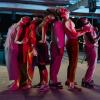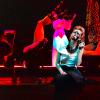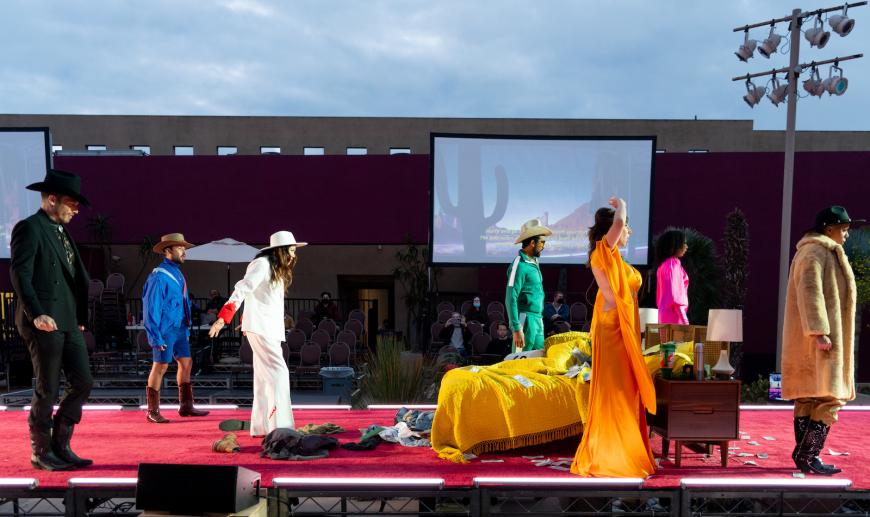
I’m not sure where Baroque Regietheater (director’s theater) got started in America, but Long Beach Opera was certainly one of its earliest staging grounds.
It all began in 1984 when the company updated Monteverdi’s The Coronation of Poppea in a racy production that basically launched director Christopher Alden onto the world scene. LBO eventually did all of the extant Monteverdi operas, venturing into Handel, Vivaldi, and Purcell and going on to apply Regietheater conceptions to works of all periods.
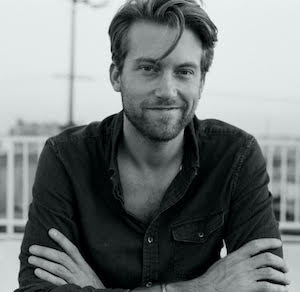
That’s what they do, and that’s what we look for them to do. While current artistic director James Darrah may be turning LBO in some new directions, digital and not, the thrust of their mission remains basically the same — playing the radical foils at the other end of the 710 freeway to the somewhat more august Los Angeles Opera main stage. And they were at it again over the past weekend in the delayed opening of their 2022 season with another transplantation of a Baroque opera, this time Handel’s Giustino as set somewhere in the Mojave Desert.
In doing so, LBO commandeered the Museum of Latin American Art in Long Beach, as they have done before (LBO Board President and Chair Robert N. Braun happens to occupy the equivalent post at MOLAA). We had to walk all the way through the museum until we came upon an installation that depicts a desert scene with simulated cactuses and a vintage telephone booth. Another hallway led to the outdoor Sculpture Gardens where the live production takes place upon a long, carpeted runway surrounded on three sides by portable bleachers for the audience (a similar surround setup was constructed for LBO’s 2013 production of Ernest Bloch’s Macbeth in San Pedro’s World Cruise Center).
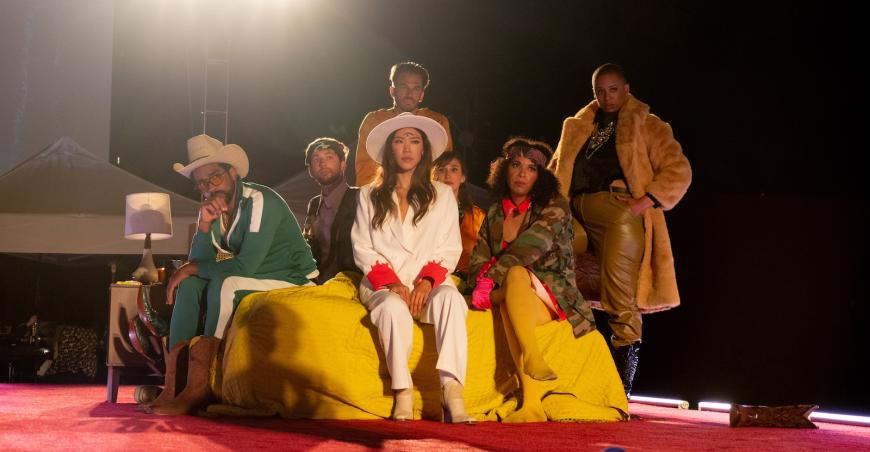
The runway has a disheveled motel bed with two lamps on either side, two chairs, and an obsolete 1970s-vintage TV. An old-fashioned, neon-lit motel sign gleams above the orchestra, and the rims of the runway are illuminated with light sabers. Five giant screens relayed still images from the indoor installation as backdrops or, in a Darrah trademark, displayed real-time video close-ups of the action in surprisingly sparse doses.
The whole setup has the airy, gaudy look and feel of being on the roads to Las Vegas or Phoenix before the freeways were built, hardly a congenial place for stylized Baroque mannerisms, let alone the convoluted plot of love and war in the Byzantine Empire. But that’s old-school reasoning in Regietheaterland — and I tend to agree with the revisionists; the rituals of Baroque opera have trouble connecting with our times beyond the purposes of the museum or casual listening.
Usually, the music in Baroque Regietheater opera is scrupulously played uncut in whatever current notions of period-performance research dictate. Uh, this one was a little different. About a quarter of the score was trimmed, including the overture, and composer Shelley Washington was brought in to make “orchestrations” and “adaptations.”
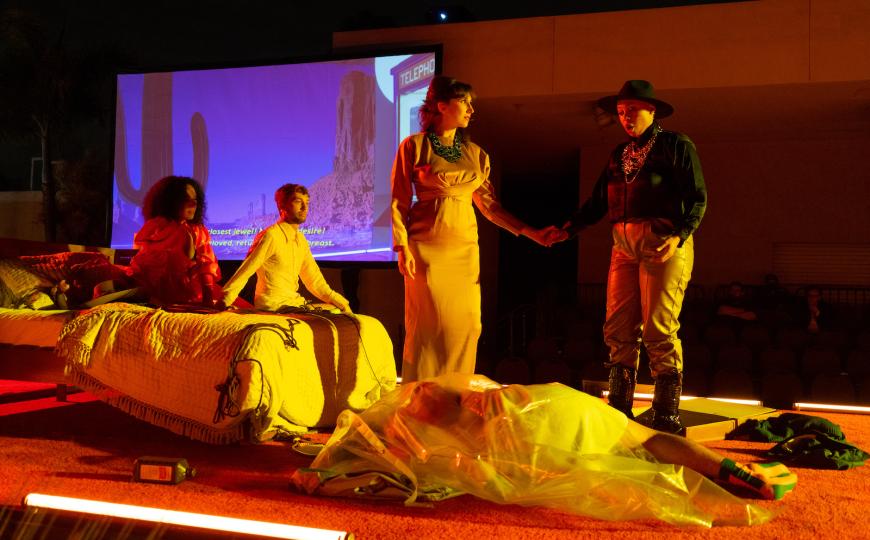
Most of the time, the Musica Angelica Baroque Orchestra under the energetic command of Christopher Rountree — recently appointed as LBO music director — was left to its own expert devices. But there were isolated patches in which Washington would come roaring in with a rock rhythm section, flaunting a disco-like beat for the entrance of La Fortuna (soprano Sharon Chohi Kim, playfully dressed in white tunic and hat à la Michael Jackson), issuing a brief blast of rock ’n’ roll for the mountain lion attack, reinforcing the Baroque band with electric bass. Most of the time, the continuo was provided by a harpsichord sound, but in Act II a Fender Rhodes electric piano turned up instead, lending a pearl-rounded poignancy to Anastasio’s pain. These “adaptations” were alternately refreshing, jarring, exciting, gratuitous, and at times, uncannily of a piece with the succession of muscle cars, motorcycles, and sirens piercing the night air on nearby Alamitos Ave.
Emperor Anastasio, originally a soprano castrato part in the bad old days, was cast as a female soprano, thus setting up a same-sex marriage with Empress Arianna. Soprano Anna Schubert sang Arianna luminously, her acting displaying a greater range than I’ve seen from her in the past, and her voice was just enough of a contrast with that of Marlaina Owens’s Anastasio. Countertenor Luke Elmer’s Giustino was played more as a young uncertain drifter than as an emerging hero.
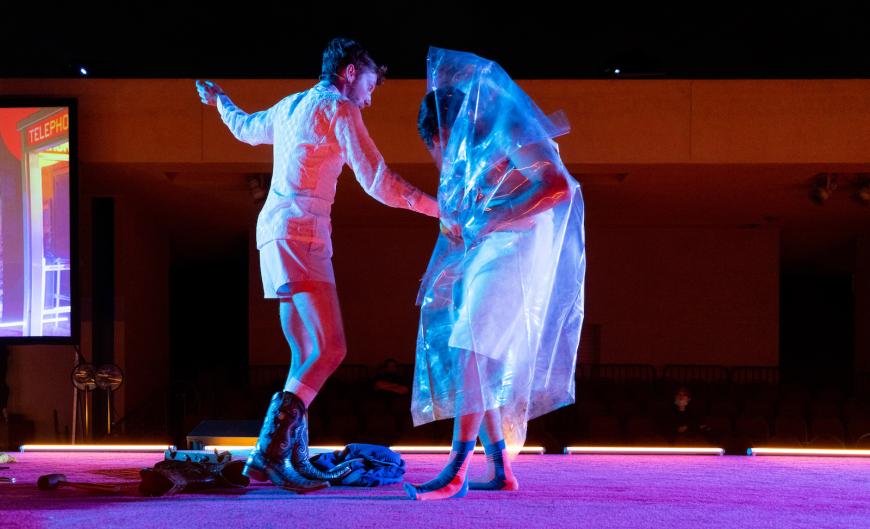
The problem of portraying Handel’s “sea monster” was “handled” (pardon the pun) economically by having Vitaliano’s aide Polidarte (Dante Mireles) do it while wrapped in plastic. It was announced prior to curtain time that bass-baritone Douglas Williams (Amanzio) was suffering from laryngitis (non-COVID) but he made it through the night admirably despite sounding uncomfortable in the lower register. Amanda Lynn Bottoms sang Leocasta in a tremulous mezzo-soprano and Orson Van Gay displayed a fine heroic tenor for Vitaliano.
If you respond to the incongruities, occasional silliness, and contemporary insights of Baroque Regietheater, you’ll probably have a good time with this (it repeats May 28). Each act is not unreasonably long — 58 and 70 minutes — the amplified sound is good, the supertitles are dim at first but quite legible after nightfall. Moreover, the museum is full of spellbinding modern abstract art, and entrance requires proof of vaccination with booster and masks when indoors. Dress warmly; the winds blowing in from the harbor were chilly.


